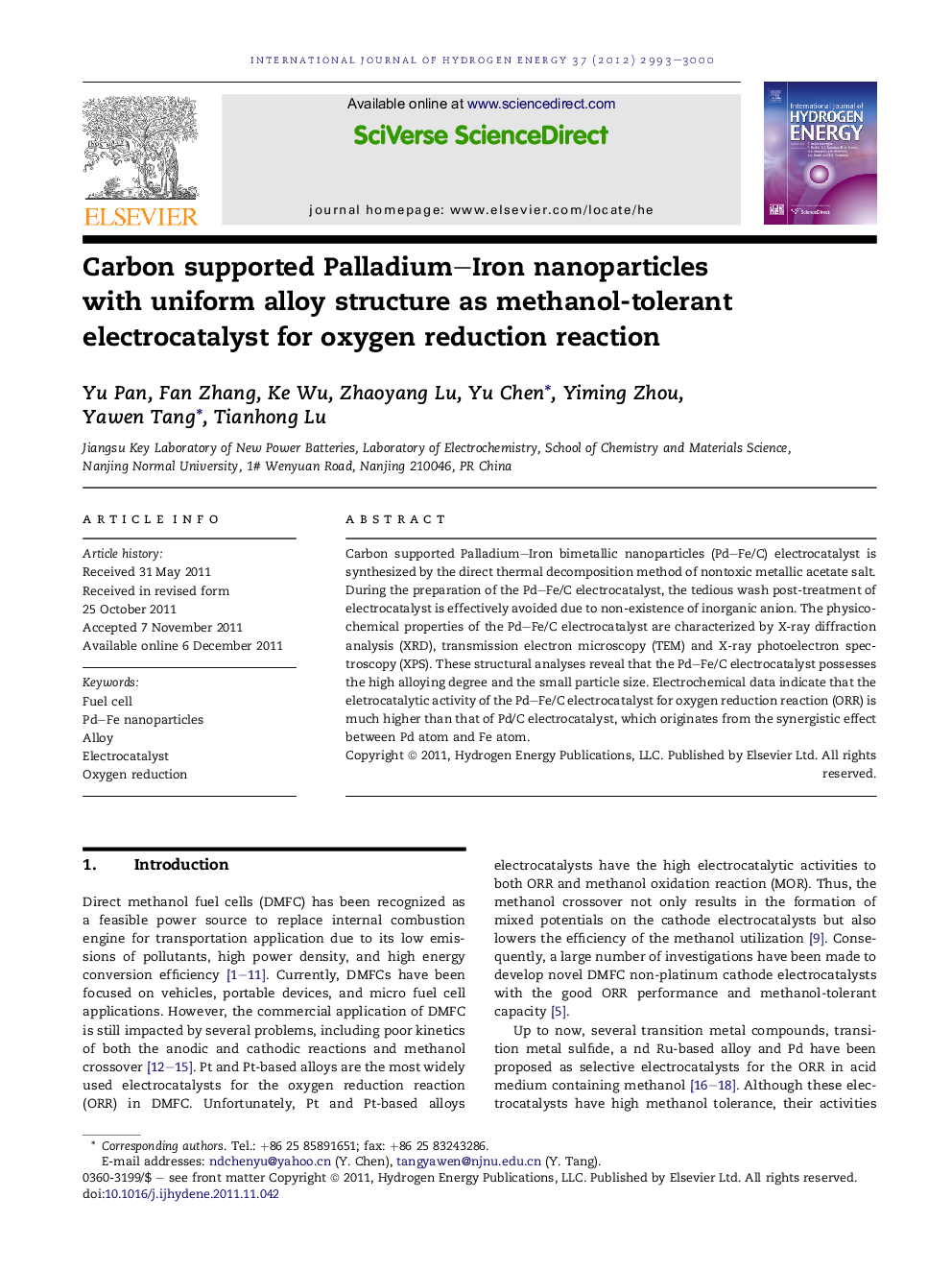| Article ID | Journal | Published Year | Pages | File Type |
|---|---|---|---|---|
| 1282304 | International Journal of Hydrogen Energy | 2012 | 8 Pages |
Carbon supported Palladium–Iron bimetallic nanoparticles (Pd–Fe/C) electrocatalyst is synthesized by the direct thermal decomposition method of nontoxic metallic acetate salt. During the preparation of the Pd–Fe/C electrocatalyst, the tedious wash post-treatment of electrocatalyst is effectively avoided due to non-existence of inorganic anion. The physico-chemical properties of the Pd–Fe/C electrocatalyst are characterized by X-ray diffraction analysis (XRD), transmission electron microscopy (TEM) and X-ray photoelectron spectroscopy (XPS). These structural analyses reveal that the Pd–Fe/C electrocatalyst possesses the high alloying degree and the small particle size. Electrochemical data indicate that the eletrocatalytic activity of the Pd–Fe/C electrocatalyst for oxygen reduction reaction (ORR) is much higher than that of Pd/C electrocatalyst, which originates from the synergistic effect between Pd atom and Fe atom.
Graphical abstractCarbon supported Pd–Fe bimetallic nanoparticles with relatively small particle size were prepared by a direct thermal decomposition method of metallic acetate salt. HRTEM images show no obvious lattice fringe is found in Pd–Fe nanoparticles, indicating Fe atom has entered into the Pd crystal lattice and form a single-phase fcc disordered alloyed structure (solid solution).Figure optionsDownload full-size imageDownload as PowerPoint slideHighlights► A novel direct thermal decomposition method is used to prepare Pd–Fe/C bimetallic electrocatalyst. ► The tedious wash post-treatment of electrocatalyst is effectively avoided due to non-existence of inorganic anion. ► The resulting Pd–Fe/C electrocatalyst shows an excellent electrocatalytic activity for the ORR.
